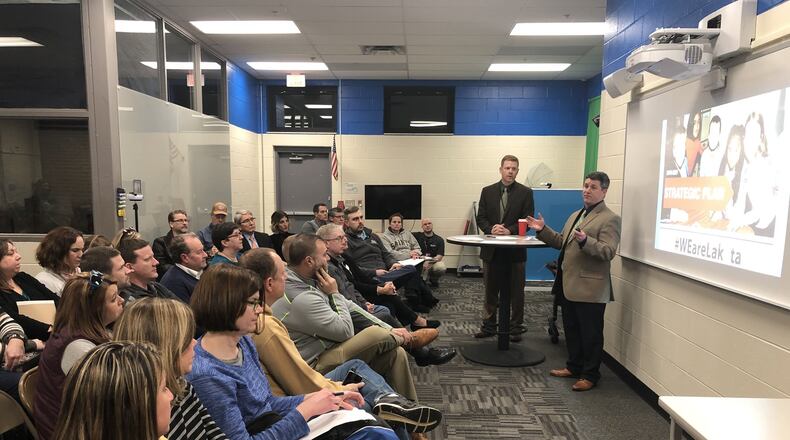Though no final funding decisions have been made, said Lakota officials, any action to build new schools may involve using state funds through a process that might see voters asked to approve a local tax hike.
Tuesday saw district officials hold a public presentation detailing projected student enrollment jumps in the coming years – especially in Lakota schools in Liberty Township.
Any use of state school construction funding requires the district to produce a comprehensive facilities review of the 16,500-student district’s 23 schools, some of which are more than a half-century old.
“This facilities plan is as much about maximizing the lifespans of our buildings as it is about making sure our educational spaces align with our vision for teaching and learning - both now and into the foreseeable future,” said Lakota Schools Superintendent Matt Miller.
Officials stressed the public will have more opportunities to not only see the master facilities plan presentation at future meetings but also can provide input on it and all related matters via Lakota’s website.
The compiling of a new plan is needed now because some of Lakota’s school buildings in both Liberty and West Chester townships are lagging in meeting the infrastructure needs of the district’s modernization efforts, said Miller.
The average age of Lakota’s schools is 32 years, with four of those buildings currently over 50 years old. By 2045, all 23 schools will be at least 30 years old, 13 of which will be over 50, said officials.
Lakota West and East high schools, which opened classes on the same day in 1997, are two of the three oldest high schools in Butler County. Fairfield High School opened in the same time period.
Lakota has seen an increase of more than 600 students since 2018, with most of it occurring in Liberty Township. That overall growth trend is expected to continue in the district’s already overcrowded northern schools, they said.
Chris Passarge, chief operating officer for Lakota, said “think of your own home and the routine maintenance and repair that it requires as it ages - some minor and some major, and then multiply that by 25 large buildings.”
“It’s imperative that we have a firm grasp on what is required in upcoming years to keep our buildings in working order and in a manner that is both efficient and fiscally responsible,” said Passarge.
About the Author
